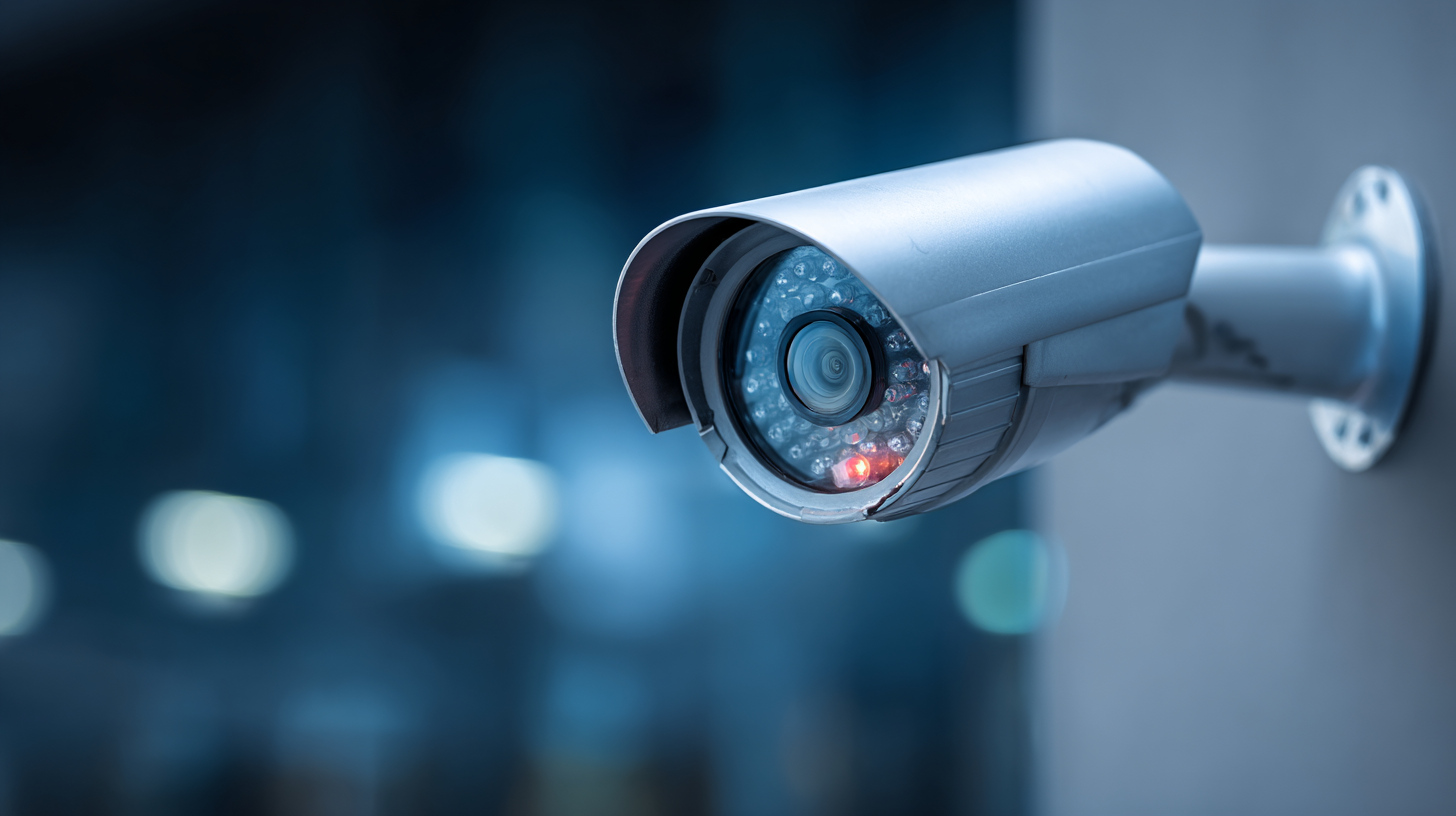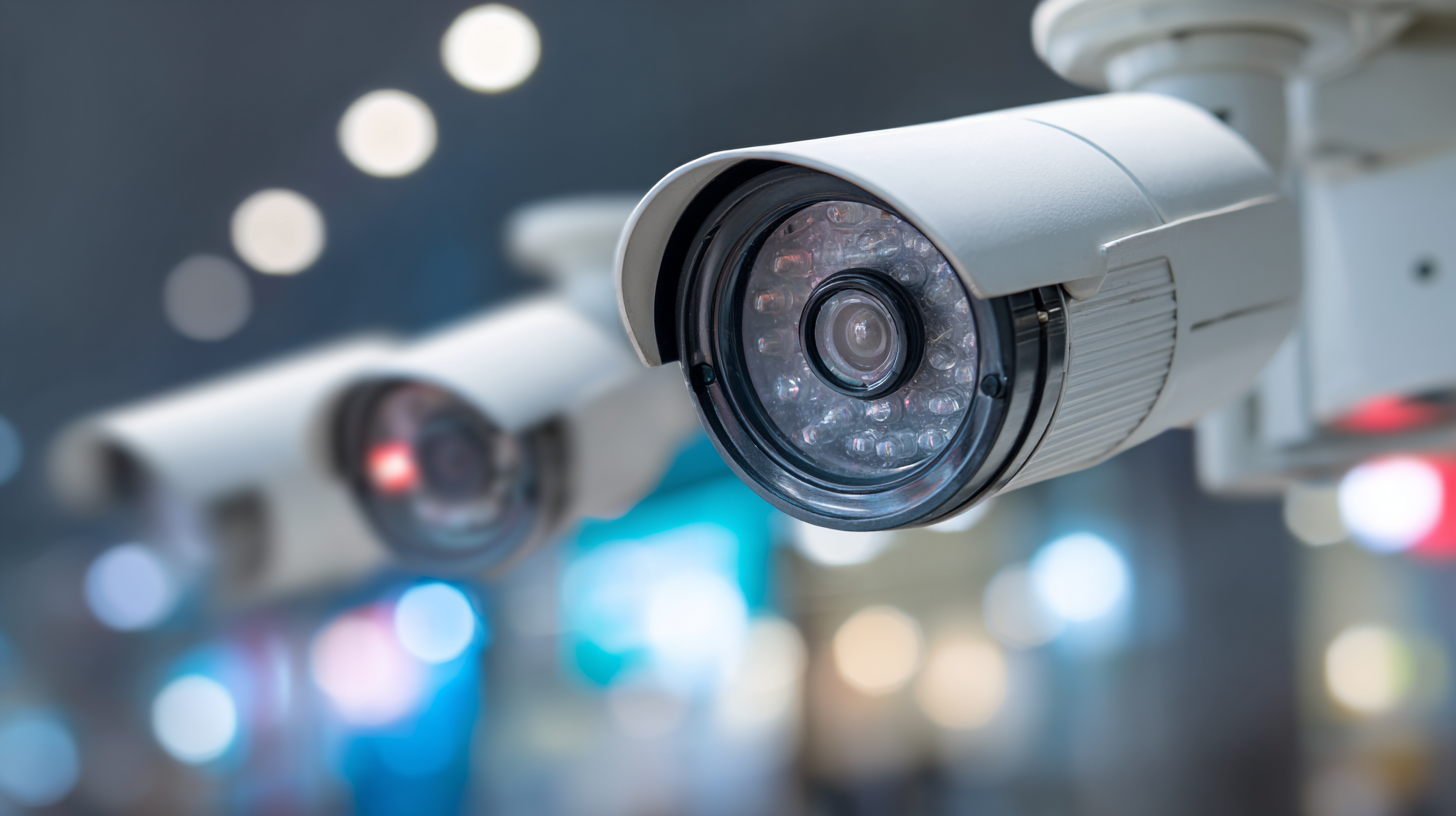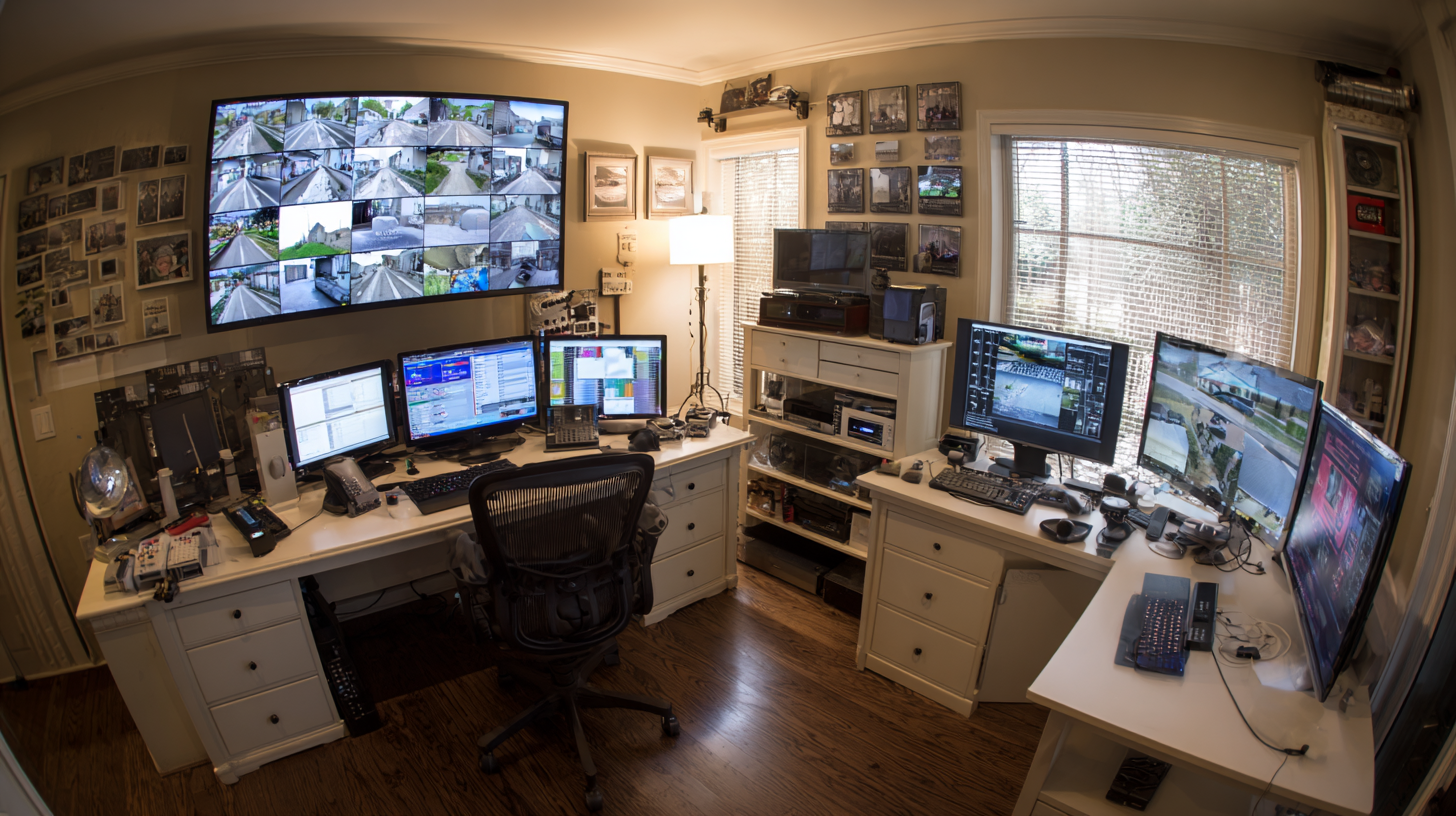As the demand for home security continues to rise, the market for Cameras For Your House has evolved dramatically, driven by advancements in technology and consumer awareness. According to a report by MarketsandMarkets, the global home security camera market is expected to reach $6.83 billion by 2024, growing at a compound annual growth rate (CAGR) of 26.2% from 2019 to 2024. This surge is fueled by the increasing prevalence of smart home devices and a growing need for enhanced safety measures. With the advent of high-definition video, nighttime vision capabilities, and integration with smart home systems, homeowners now have access to sophisticated options that not only deter potential intruders but also provide peace of mind.

In this blog, we will explore the top cameras available for protecting your space, highlight their technical specifications, and provide tutorials on how to effectively utilize these devices for maximum security.
 The evolution of home surveillance technology has significantly transformed how we approach security in our personal spaces. Over the years, the shift from basic analog cameras to advanced digital systems equipped with artificial intelligence has redefined the landscape of home protection. Smart cameras now offer features like motion detection, facial recognition, and real-time alerts, which allow homeowners to monitor their properties from anywhere in the world through their smartphones. This innovative technology not only enhances the safety of homes but also provides peace of mind, ensuring that homeowners can respond promptly to any suspicious activities.
The evolution of home surveillance technology has significantly transformed how we approach security in our personal spaces. Over the years, the shift from basic analog cameras to advanced digital systems equipped with artificial intelligence has redefined the landscape of home protection. Smart cameras now offer features like motion detection, facial recognition, and real-time alerts, which allow homeowners to monitor their properties from anywhere in the world through their smartphones. This innovative technology not only enhances the safety of homes but also provides peace of mind, ensuring that homeowners can respond promptly to any suspicious activities.
Moreover, the integration of smart home ecosystems has further advanced surveillance capabilities. Modern cameras can connect seamlessly with other smart devices, such as doorbells, lights, and alarms, creating a comprehensive security network. This interconnectedness enables users to automate their security systems according to their lifestyle, such as setting up camera triggers for lights to turn on when movement is detected. As we look to the future, the continuous advancements in camera technology and AI will further push the boundaries of home security, making it smarter, more intuitive, and increasingly accessible for everyone.
When considering the best home surveillance cameras for your space, there are several key features to prioritize.
Firstly, resolution is crucial; opt for cameras with at least 1080p HD quality
to ensure clear images that can help identify intruders or monitor activities effectively.
Additionally, look for models with night vision capabilities. This feature is essential for round-the-clock surveillance,
allowing you to capture clear footage even in low-light conditions, enhancing your home’s security during the night.
Another important aspect is the field of view. Wide-angle lenses can cover more area, reducing the number of cameras
needed for full coverage of your property. Features like motion detection and
two-way audio also add to the functionality of your surveillance system. Motion detection can send alerts
to your smartphone, while two-way audio allows you to communicate with visitors or potential intruders. Lastly, consider
the storage options available—cloud storage provides convenience and security, while local storage gives you immediate
access to footage without relying on internet connectivity. These features will ensure that your home surveillance system
is not only efficient but also tailored to your specific security needs.
As home surveillance technology continues to advance, homeowners are increasingly focused on comparing leading brands in order to enhance their security systems. Major players include Arlo, Ring, and Nest, each offering distinct features that cater to various needs.

Arlo provides high-definition video quality and versatile options for indoor and outdoor use, while Ring focuses on seamless integration with home automation systems and user-friendly mobile apps. Nest, known for its smart home compatibility, offers intelligent alerts and advanced facial recognition features.
When choosing a home security camera, consider these tips: first, assess your specific security needs. Are you looking for cameras that excel in low light, or do you need motion detection capabilities? Second, examine the brand's ecosystem; compatibility with other smart home devices can enhance your overall security structure. Lastly, check customer reviews and support options; a reputable brand with excellent customer service can make a significant difference in your experience.
Additionally, think about storage options available with the camera systems. Some brands offer free cloud storage while others charge subscription fees for access to recorded footage. Choosing the right storage solution will not only save you money but also ensure that you have access to critical video evidence when needed.
The integration of smart technology into home surveillance systems is revolutionizing how homeowners protect their spaces. According to a recent report by Statista, the global smart home market is projected to reach approximately $174 billion by 2025, with security cameras accounting for a significant portion of that growth. Traditional security measures are being replaced by sophisticated solutions that offer real-time monitoring, remote access, and artificial intelligence-driven features, which enhance both convenience and security.
Smart cameras now boast capabilities such as facial recognition and motion detection alerts, enabling homeowners to receive immediate notifications on their mobile devices. Research from MarketsandMarkets indicates that the smart security camera segment is expected to grow from $1.5 billion in 2020 to over $4.5 billion by 2025, indicating a strong shift towards more intelligent and reliable surveillance options. Furthermore, integration with smart home ecosystems, such as Amazon Alexa or Google Assistant, allows users to control their surveillance systems effortlessly, increasing their effectiveness and user experience. This convergence of technology not only provides peace of mind but also transforms home security into a seamless part of our daily lives.
As the landscape of home surveillance evolves, the importance of security in our living spaces cannot be overstated. With rising concerns about safety and the increasing sophistication of threats, investing in home surveillance systems presents a compelling cost-benefit analysis. For homeowners, the upfront investment in advanced surveillance cameras is often outweighed by the long-term peace of mind they offer. In today's world, where economic shifts challenge the stability of personal assets, protecting one's home becomes a crucial element in overall asset management.
In China, for instance, the economic transition has amplified the urgency for homeowners to reevaluate their asset allocation strategies, making long-term safety a priority. The disappearance of real estate dividends and the global economic uncertainties prompt individuals to seek safeguards for their properties. High-quality surveillance systems not only deter potential intruders but also provide homeowners with valuable insights into home activity through interconnected devices.
This integration of technology into our homes not only fosters safety but represents a strategic investment in a future where personal security is paramount.